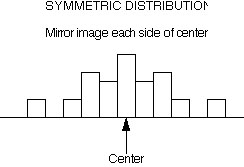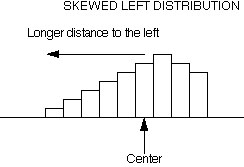
Business and Economic Statistics
Introduction
Descriptive Statistics - Method that focus on the collection, preesentation and characterization of a set of data in order to property describe the various features of data sets
Population - the totality of items or things under consideration
Parameter - summary measure that describes a characteristic of an entire population
Sample - portion of population that is selected for analysis
Statistic - summary measure computed from sample data that is used to describe or estimate a characteristic of the entire population
Reasons for obtaining Data
Provide necessary input to a survey, study
Measure performance of an ongoing service or production process
Evaluate conformance to standards
Assist in formulating alternative courses of action in a decision-making process
Satisfy our curiosity
Sources of Data
Government, industrial or individual sources
Experiment
Survey
Observational Study
Types of Data
Categorical random variables, e.g. Yes / No Question
Numerical random variables, e.g. how much money will you spend every week?
Discrete random variables - arise from counting process
Continuous random variables - arise from a measuring process
Organizing Data
Ordered Array - sequence of raw data in rank order from smallest to largest
Stem and Leaf Display
Tables and Charts (Numerical)
Width of class interval = Range / no. of desired class groupings
Main advantage of using summary table is that the major data characteristics can become immediately clear to the reader.
Histogram - constructed in the boundaries of each class
Cumulative Frequency Polygon (Ogive)
Tables and Charts (Categorical)
Summary Table, Bar chart, Pie Chart, Pareto Diagram
Graphical Excellence
well-designed presentation of data that provides substance, statistics and design
Communicate complex ideas with clarity, precision and efficiency
Give the viewer the largest number of ideas in the shortest time with the least ink
Always involve several dimensions
Telling the truth about the data
Chart junk is a decoration that is redundant data-ink
Focus - Labelling, zero value in X axis and Y axis, Title, Time series
Numerical Descriptive measures
Measures of Central Tendency
Mean
Median - (n+1)/2 ranked observation
Mode
Quartiles - q (n+1) / 4 ranked observation
Geometric Mean - {(1+R) X (1+R) ...... X (1+Rn) } to the power 1 -n, - 1
Measures of Variation
Range = Largest value - Smallest value
Interquartile Range = Q3 - Q1
Sample variance = (value - Mean ) square / n -1
Sample S.D. = Square root (Sample variance)
Population Mean = Sample Mean
Population variance = (value - Mean ) square / N
Population S.D. = Square root (Population variance)
The variance and the S.D. measure the "average scatter" around the mean
More spread out, Larger range, Interquartile range, variance, the standard deviation
More concentrated, or homogeneous, the smaller the dispersion
If the observation are all the same, the dispersion will be zero.
Coefficient of variation - Sample S.D. / Sample Mean X 100 %
The higher the risk category the larger the relative size of the average spread around the mean is to the mean.
Shape
Symmetrical
Asymmetrical / Skewed
Mean > Median: positive or right-skewness (the peak distort to the left) - mean is increased by some unusually high values

Mean = Median: Symmetry, or zero-skewness (the peak in the central)

Mean < Median: negative or left-skewness (the peak distort to the right) - mean is reduced by some unusually low values

The skewness for a normal distribution is zero, and any symmetric data should have a skewness near zero.
Negative values for the skewness indicate data that are skewed left and positive values for the skewness indicate data that are skewed right. By skewed left, we mean that the left tail is heavier than the right tail. Similarly, skewed right means that the right tail is heavier than the left tail.
Skewness measures the coefficient of asymmetry of a distribution. A risk-averse investor does not like negative skewness
Box-and-Whisker Plot
- graphical representation of the data based on the five-number summary
Importance of
indicating the shape, center, and spread when
describing a distribution
You can think of this in terms of summaries of various lengths
describing the data, starting with the shortest summary, which would
be some sort of "typical" value or measure of center. Then you might
wonder if all the data are typical or if there is a lot of scatter, so
step 2 might be a measure of variability.
Finally, shape helps you to
put these into perspective and choose appropriate summaries. An
approximate normal distribution has most of the data clumped around
the center, and the mean and s.d. are good summaries. A
distribution that is highly skewed and/or has a lot of
outliers might better be described with a median and
IQR. A bimodal distribution usually is not well
characterized by ONE typical value. Etc.
¡@
¡@
¡@
¡@
¡@
¡@